I don't have the time to track all these records down, although it would be fun. So I just ordered the set. I may still do it but I'll bet it'll cost more than 119.00 to do it right.
Simon and Garfunkel: The Complete Columbia Albums Collection (Copy Corrected 9-3-15)
The story that has been handed down through the decades goes like this: Simon and Garfunkel’s vinyl LPs were originally produced using master tapes. Because S&G became so popular, over time the tapes would show signs of wear, so Columbia engineers would make a copy, toss the original, and begin cutting lacquers using the copy.
When the copy showed signs of wear, it would be copied and the copy used to generate more lacquers. The original copy would then be tossed.
Eventually, it got to the point where the copies of copies of copies sounded so awful they were deemed no longer usable and production stopped. With the advent of the CD, something had to be done to restore the catalog to its former luster.
So, the story goes, Sundazed’s Bob Irwin, then working for Sony’s Legacy division, restored an assemblage of vintage gear that duplicated Columbia’s ‘60s era mix down facility. Using the original four track tapes, he re-mixed the four albums after Wednesday Morning, 3 A.M. (which originally sold but 2000 copies and was never a big enough seller subsequently to warrant repeated masterings and pressings), to sound as close as possible to the original mixes. These mixes were used for CD reissues and boxed sets.
However, (so the story goes), these mixes were never considered suitable for a vinyl box set reissue, though Sundazed did issue the individual albums on vinyl some time ago. Unfortunately at that time the pressing quality was poor and the overall sound was undistinguished (Sundazed now presses at QRP).
Sundazed's Bob Irwin emailed today (9/3/15) to say that Sundazed's S&G reissues were not from the remixes he'd done but rather that he "...pulled the foreign tapes in (all that could be located at that time - it’s very possible that Steve [Berkowitz] found even more), but I STILL chose the U.S. Dolby copy to make our Parsley, Sage, Rosemary and Thyme LP, because it sounded BEST to me out of all sources."
Analogplanet.com has never had that information and we apologize to Irwin and to Sundazed for any misinformation we may have inadvertently published here.
Here is his statement, authorized for publication:
"I pulled in all existing foreign copies of the album masters (that could be located at the time) many years ago, after the “Old Friends” (CD) box set was long-released. I STILL chose the U.S. Dolby copy to make our PSR&T LP, because it sounded BEST to me out of all sources. (We never issued the first two S&G albums on Sundazed.) Furthermore, the U.S. cutting masters for “Bookends,” “Bridge..,” and “G.Hits” were ALWAYS on hand, never missing in the first place. I believe that to be the same for “Wednesday Morning..” as well. But - as I have said many, many times, when there is a designation on the tape ledger/box of something like “dash 2,” "dash 3,” etc., that does NOT always and/or necessarily mean that those tapes are “x” generations away from the master. It CAN mean that, but often does NOT. Many Dylan masters are marked dashes “2” “3” “4” etc, but that often means that there were that many REVISIONS to the original tape, before it was declared the “final” master. It was not an easily definable system - it was subject to interpretation, from inception. For 'Parsley Sage’, the “current” U.S. stereo analog master is marked as “dash 3”, but is actually only one generation away from the original first-gen master - it is a Dolby copy of that original tape, made in the 70’s. This is the tape we used for the Sundazed LP release, and I determined it to be the most superior analog source available. (The absolute original, first-gen U.S. stereo master is gone.) And, backtracking, the original master was indeed a “dash 2,” meaning that there was some sort of revision made to the tape before it was “finalized as the cutting master". At the end of the day, the ONLY way this system of “marking masters” can be truly discerned and determined is by using your knowledge and your EARS."—Bob Irwin, Sundazed Music.
These almost fifty year old tapes were brought to New York’s Battery Studios last year and found to be in remarkably good condition—at least good enough to be carefully played back and digitized by engineer Vic Anesini at various high resolution formats including at 96/24 for vinyl cutting.
That is the story. I write it that way because much of Columbia’s record producing history remains shrouded in mystery. For instance, it’s now widely accepted that Columbia 1A, 1B and 1C lacquers are “first pressings” with 1A lacquers going to the label’s Pitman, NJ pressing plant, 1B to the Terre-Haute, Indiana plant and 1C to the Santa Maria, California plant.
There’s good evidence to support this, from a Sundazed photo of the mono John Wesley Harding tape box.
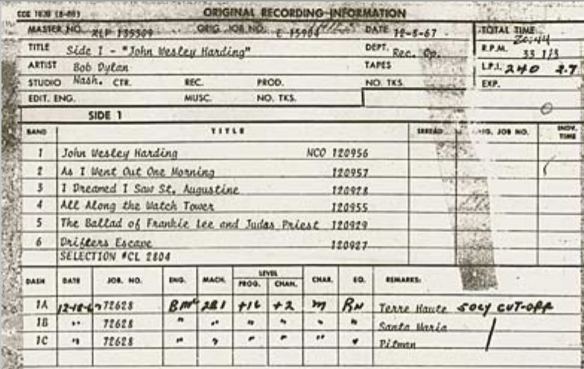
Therefore it is surmised (but no one knows for certain) that 1D, 1E, and 1F are second pressings. The system goes to 1L (11th lacquer) after which it goes to 1AA, 1AB, 1AC through 1AL (22nd lacquer) and then to 1BA (etc.). Columbia didn’t use the letter “i”. When the number changed from 1 to 2, it indicated a tape change, (so the story goes).
Again, I write “so the story goes” because there are odd anomalies that cast doubt on this neat and clean scenario. For instance, I have a 1A/1A copy of Parsley, Sage, Rosemary and Thyme purchased for $2.49 at Sam Goody, Valley Stream, L.I. (Green Acres Shopping Center) and another copy that’s 1A/1AC. That means side one is sourced from the first lacquer but side 2 is from the fourteenth lacquer? Okay, maybe. But what about records that are 1A/1C? I have some of those.
The point is, “so the story goes” is operative for all that’s above. The above story raises a few interesting questions. What sources were used for the 1981 5 LP box set Simon and Garfunkel Collected Works (issued in 1990 as a 3 CD set) as well as for the 2001 The Columbia Studio Recordings 1964-1970)?
Simon and Garfunkel: The Complete Columbia Albums Collection
This is a six LP, boxed set that includes five studio albums and their best selling (14 million plus copies sold) “greatest hits” LP issued in 1972 comprised of ten studio tracks (nine of them singles) and four as of then unreleased live recordings.
The box is reasonably priced at $149.99 (Music Direct currently has it on sale for $119.99) considering that the records were mastered by Ryan K. Smith at Sterling Sound and pressed at RTI on 180g vinyl.
The box also includes a full-sized booklet containing many great photos as well as excellent annotation by my old friend Bud Scoppa and well-detailed production and release information as one would expect from producer Steve Berkowitz. In addition, each record includes a high quality MP3 download card.
There’s also a fold out photo of the famous photo of S&G taken at the 53rd street subway stop for the first album’s cover. Speaking of covers: the photo reproduction is reasonably well done (mostly using scans and not original art work) and carefully executed, though not on heavy stock, nor are the covers “Tip-on” constructed, nor is the poster from Bookends included.
Yes, all of us would have preferred lacquers cut from tape but decisions were made by others to cut from files. No doubt the tapes were not in immaculate condition but were they robust enough for lacquer cutting? We will probably never know. Nor will be know whether Queen’s upcoming box set was cut from files because the tapes were also fragile or because it saves money and is “easier”, or because the Queen folks wanted to re-write musical history by producing an “improved” version of the group’s classic works (ala what EMI did for [or to] the stereo Beatles box set reissue).
In this case the tapes were at Battery Studios, literally “down the block” from Sterling. I got to see them, but not hear them during a visit there last year. Finding them after all these years was regarded by all as somewhat of a miracle. The bottom line of course, is how do these 96/24 sourced reissues sound compared to original pressings?
Wednesday Morning, 3AM (CS 9049)
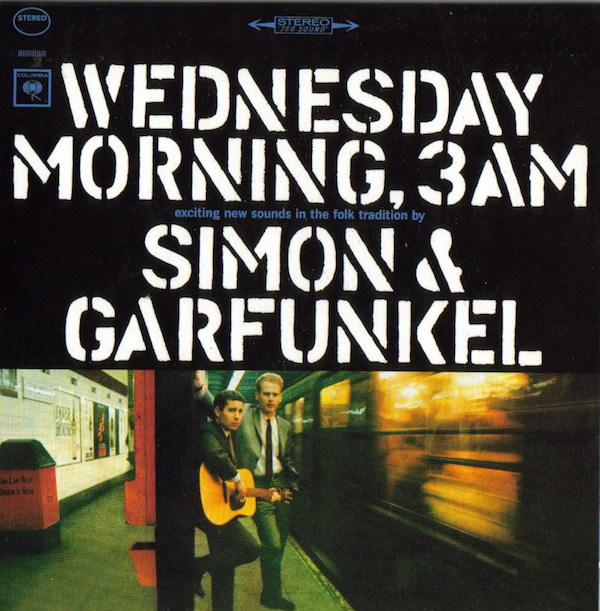
In retrospect it’s easy to trace the influences on Paul Simon and on Art Garfunkel and on Simon & Garfunkel: first it was the Every Brothers when the duo were Tom and Jerry. Between that pairing and this one, the duo worked separately and together in various music business pursuits and dreams.
On this, their debut Columbia album subtitled “exciting new sounds in the folk tradition by…” you can hear the Peter, Paul and Mary influence on the gospel opener and the late fifties- early sixties “folkie” movement throughout much of the rest, including of course on the many covers, which the duo cover competently but with a somewhat softer and more mellifluous touch than what many of the older, more exuberant folkies produced a few years earlier.
While “Bleecker Street” and Sparrow”, the two other originals on side one, are well-crafted, you are stopped only when you get to “Sounds of Silence” at the end of side one. “A major work”, Art writes in the annotation, and in this case that wasn’t hyperbole. Except for the neon sign reference the words could have been written tomorrow, though when Simon wrote it, he was thinking about the Kennedy assassination.
Side two opens with an original, “He Was My Brother”, which sounds based on the traditional “He Was a Friend of Mine”, here prompted by the murder of three civil rights workers murdered in Mississippi, one of whom, Andrew Goodman, was a Queens College classmate of Simon’s. A few years later The Byrds would use “He Was a Friend of Mine” for its own Kennedy tribute.
The side ends with the title track but the other side’s closer was the one that caught the attention of some college kids.
Still, the album sold but a few thousand copies and the discouraged Simon flew off to England, which was then officially “happening” musically, (folkie and otherwise) while Garfunkel continued his education at Columbia University.
Meanwhile the album’s producer Tom Wilson (Mothers of Invention, Bob Dylan, etc.) heard (or so the story goes) that college kids were digging “The Sounds of Silence” and with folk-rock now emerging thanks to Bob Dylan, who Wilson had also produced (three albums plus the epic single “Like a Rolling Stone” after which he was replaced by Bob Johnston), Wilson got the idea to take the basic “Sounds of Silence” track and overdub electric bass, guitar and drums. The single went to #1 in the fall of 1965. Incredibly, neither Simon nor Garfunkel knew about the re-release until they heard it on the radio.
I compared a “360 Sound” original (1E/1G) to this reissue. Of course the original (I bought used in the late ‘80s for $3.00) was pristine until “Sounds of Silence” which the original owner (a guy named Guba) had played to near-extinction.
The reissue gets the box off to a very promising start. It’s not quite as starkly transparent and delicate as the original, but remember, the tape is more than fifty years old and probably not the original but a copy. Interestingly, the booklet doesn’t talk about the European tapes, or the re-mastering process and there are but a few images of tape boxes: there’s one of a 4 track tape dated 12-13-65, which couldn’t be the debut album, released in ’64, and there are visible sections of what appears to be the Bridge Over Troubled Watermaster tape box and the Greatest Hits tape box as well.
However, knowing Steve Berkowitz, you can be pretty sure the reissue of that wasn’t produced from that master. Rather, I suspect since this was digitally produced, the cutting master was created from earlier generation sources instead of from the tape copies used to compile that tape (just a guess).
Sounds of Silence (CS 9269)
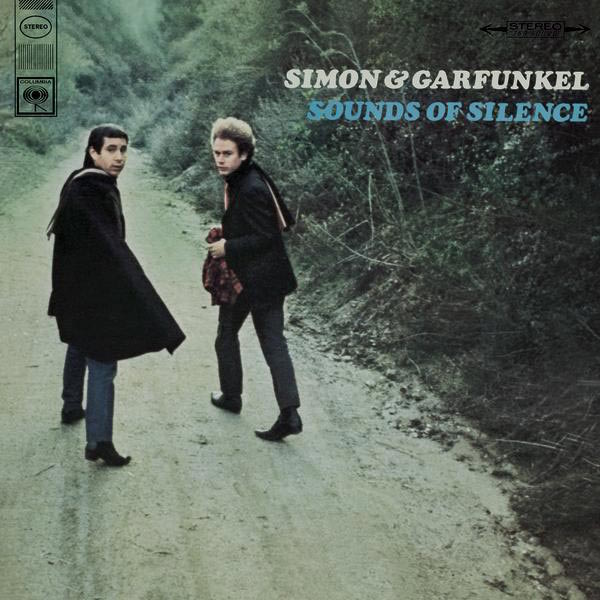
While in England Simon recorded for CBS U.K. The Paul Simon Songbook (CBS 62579), a solo album issued in 1965 that contained songs later found on this second S&G album as well as on Parsley, Sage, Rosemary & Thyme.
With the sudden success of the “Sounds of Silence” single, Simon returned to New York where, with Bob Johnston producing the duo. The album opens with the electric version of the title tune plus from Simon’s UK solo album “Leaves That Are Green”, “April Come She Will”, “A Most Peculiar Man”, “Kathy’s Song”, and “I Am a Rock” (“The Sound of Silence” also appeared on the U.K. solo album along with “He Was My Brother” from the group’s debut).
This was the album that helped define and delineate many a college student’s world and personal view. Released in January of 1966 it was a cold climate soundtrack that cut to an alienated college kid’s core and expressed clearly cloudy thoughts and long-simmering resentments bathed in pleasingly melodic tunes and Roy Halee’s innovative soundscapes. (Please read part 1 of the Roy Halee interview I conducted with him back in the late 1980s).
The foreboding “Leaves That Are Green” done as a bouncy skiffle? The Byrds-influenced “Blessed” backed by a wall of wiry guitars. “Kathy’s Song” filled with creative self-doubt and allegiance to and/or longing for a foreign country. A few songs of suicide, paranoia and alienation and an instrumental by Davey Graham (“Anji”, here called “Angie” and credited to Bert Jansch, though correctly spelled “Anji” on the cover) round out an album that stands up well today musically and sonically, even though all these years later the influences appear starkly and some of the production and arrangements.
Yes, this was a hastily concocted album, necessitated by the surprising success of the single “The Sounds of Silence”, but thanks to Simon’s prolific songwriting during his time in England, the result was a strong second album, that though deeply personal, strongly resonated with college kids, who were that generation’s taste-makers and cultural leaders.
Given that the source material was second generation and then cut from files, the sound is, overall, remarkably similar to the original. I paid particular attention to the tambourine in “Leaves That Are Green” and to the bass-twangy opening to “Richard Cory” that always sounds as if it’s in the wrong key but isn’t and Vic Anesini who mastered the files and Ryan K. Smith who cut lacquers pretty much nailed it.
There’s a slight loss of depth and delicacy and sibilants are slightly harder and more prominent but the original’s been played for close to fifty years so there’s a good chance some of the transients have been smoooothed over.
Interestingly, I’ve never seen this particular cover with “Sounds of Silence” in blue and no song listing, nor does the annotation explain it. Have you ever seen it?
What does help explain the close-to-the-original LP sonics is that as with The Beatles mono box set (and everything Steve Berkowitz produces) he references when possible original “1A” pressings. I lent the project some of mine. Every time I see the back cover photos I think they from Help!!
Parsley, Sage, Rosemary and Thyme
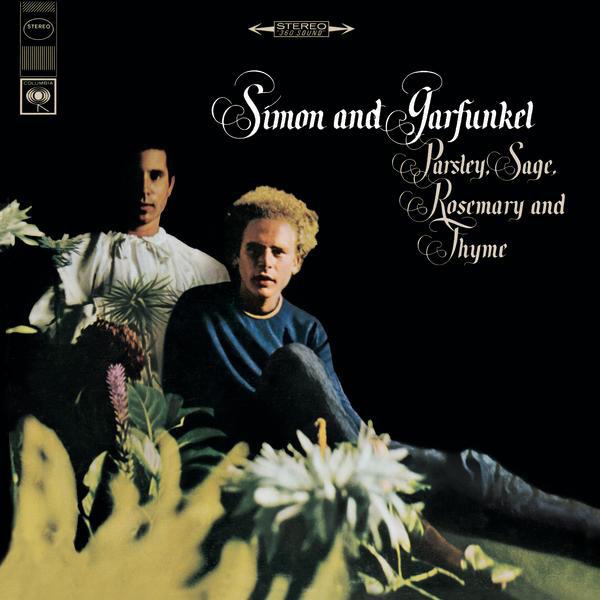
The third Simon and Garfunkel album was the result of three months in the studio with producer Bob Johnston and engineer Roy Halee, who for all intents and purposes probably functioned more as producer than did Johnston, who had a more “hands off” approach.
Again, the duo relied on songs Simon had written in England that appeared on his solo album: “Patterns”, “Flowers Never Bend With the Rainfall” and “A Simple Desultory Philippic”. The “Canticle” part of the opening tune was taken from “The Side of A Hill”, which also appears on the solo album.
Most of the album marks a return to the soft, mostly acoustic arrangements found on the duo’s debut. That choice made it easier to spotlight the duo’s mesmerizing vocal interplay, that, as with The Everly Brothers, produced a whole greater than the sum of its parts.
The opener’s production delicacy—the reverb drenched guitar and vocal space, pristine harpsichord and “dripping” celeste, chiming way in the background, announce a move towards more imaginative production. “Patterns” is packed with ear-catching production accents like the bongos on the right channel, and an abrupt, surprise ending. “Cloudy” sounds and feels like a breezy, hippie visit to California. “Big Bright Green Pleasure Machine” is fun filler and the side ends with the iconic “The 59th Street Bridge Song”. A lot of folk on side one, very little rock.
Side two starts alarmingly precious as “you read your Emily Dickinson and I my Robert Frost” induces a few minor butt-twitches, but “can analysis be worthwhile (cue the breezy harp glissandos), is the theater really dead?” results in full blown butt-cringing discomfort.
Fortunately that’s followed by “Flowers Never Bend With the Rainfall”, which has a “Leaves That Are Green….” Feel and then comes “A Simple Desultory Philippic”, which was too cudly a Dylan parody back then and time travels only moderately well.
“For Emily, Whenever I May Find Her” is among Simon’s most affecting melodies set to lyrics of love dreamed of and love delivered sung with angelic force by Garfunkel. It’s every bit a vocal show piece for him as is “Bridge Over Troubled Water”, though it’s far shorter.
“Poem on the Underground Wall” turns into a religious experience a tale about a graffiti artist scrawling the “F” word on a subway advertisement.
The album ends with the instantly trite “7 O’clock News/Silent Night”. One play was enough forever, though listening to it now conjures up strong memories of those headlines at a bleak time in history.
Talk about a “soundtrack to a generation” album. With Parsley, Sage, Rosemary and Thyme, Simon and Garfunkel burrowed deeply within a generation’s subconscious in ways few artists of the time managed.
I compared 1A/1A and 1A/1AC originals with the reissue and was impressed by similar tonal balances. The bass drums don’t extend quite as deeply or with as much authority as on the original, but compare the tambourine hits on “Flowers Never Bend With the Rainfall” and on originals and reissue you will hear the same delicate combination of skin and metallic “zils”. The distant tambourine on “Poem on The Underground Wall” hasn’t quite got the original’s sparkle.
Overall, the reissue is a bit harsher on vocal sibilants but after a few dozen plays that might smooth out to more closely resemble the original. I’d rate this reissue a complete success.
The single “Mrs. Robinson”, written specifically for The Graduate” soundtrack came next and was a hit single, followed by Bookends two months later.
Bookends (KCS 9529)
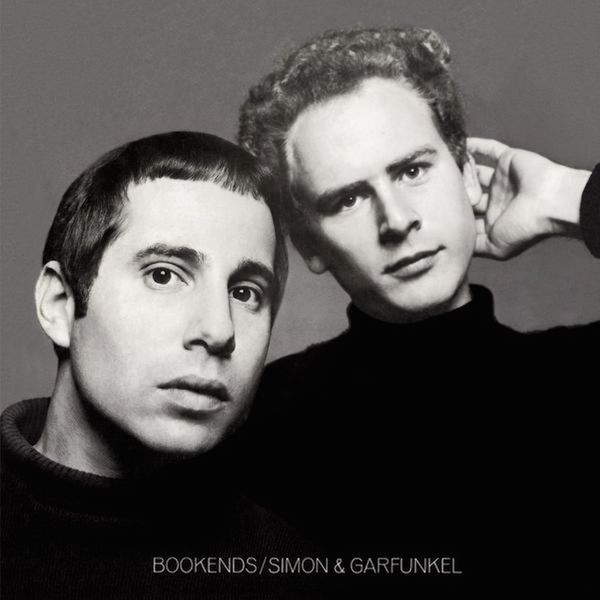
Simon and Garfunkel delivered in March of 1968 a cohesive work in which two youngsters dealt with life-phrases, aging and death. I remember thinking at the time what Simon and Garfunkel will think of these songs when they are close to the age of some of the old people interviewed. And here we are! Well, close anyway.
“America” exudes youthful optimism and adventure but also a generation’s desire to connect with country at a time of maximum generational alienation.
The bitter, cynical “Overs” expresses middle-age malaise and then following the voices of the old people, comes the melancholy, you could say pitiful “Old Friends”.
Describing the dress, behavior and lifestyles of these really old, rickety people Garfunkel sings “How terribly strange to be seventy”. And now he is!
Side two’s is a more varied set starting with “Fakin’ It”, Simon’s admission of suffering from writer’s block. It opens and closes by quoting the end of “I Am The Walrus” and copies Donovan’s basic “Sunshine Superman” riff. Simon bemoans his current “cut and paste” approach by singing “prior to this lifetime, I surely was a tailor”, after which he acknowledge’s Donovan’s contribution with the “Good Morning Mr. Leitch, have you had a busy day”? interlude.
“Punky’s Dilemma” returns to the “59th Street Bridge Song”’s whimsy and then comes the hit single “Mrs. Robinson” followed by two more classics to complete another groundbreaking album. “A Hazy Shade of Winter” in which Simon expresses his dark dis-content though “it’s the springtime of my life”. In some ways it sounds like something hyper-dramatic Neil Diamond could have written during his Brill Building days when Simon was probably toiling as a songplugger. That’s meant as a compliment.
Finally comes “At the Zoo”, a whimsical look at people using animals as foils and procreational zest, as the album comes full circle and completes the cycle of life. At least that’s my take on it and I’m sticking with it.
Faced with what appeared to be Simon’s writer’s block, Columbia brought in producer John Simon who is credited for production assistance on “Save the Life of the Child”, with its unusual percussion, disruptive, ominous Moog synthesizer growls and especially its deeply echo-y distant accents, as well as on “Fakin’ It”, and “Punky’s Dilemma”.
Comparing the reissue to a few originals makes obvious that Bookends is probably the best sounding and most interestingly produced Simon and Garfunkel album and in this case I think the original soundly beats the reissue, though without comparing the two, the reissue is very well done and one could argue that a few instrumental elements like some acoustic guitars, fare better on the reissue. The original wins because of far greater transparency, instrumental three-dimensionality and staging spaciousness. Compare the acoustic guitars on “Overs”, for instance and the purity and naturalness of Simon’s voice or Jimmie (misspelled as "Jimmy") Haskell’s string arrangement at the end of “Old Friends”. Speaking of which, every time I hear “Old Friends” I think it’s the song that inspired Sufjan Stevens to become a performer.
Bridge Over Troubled Water
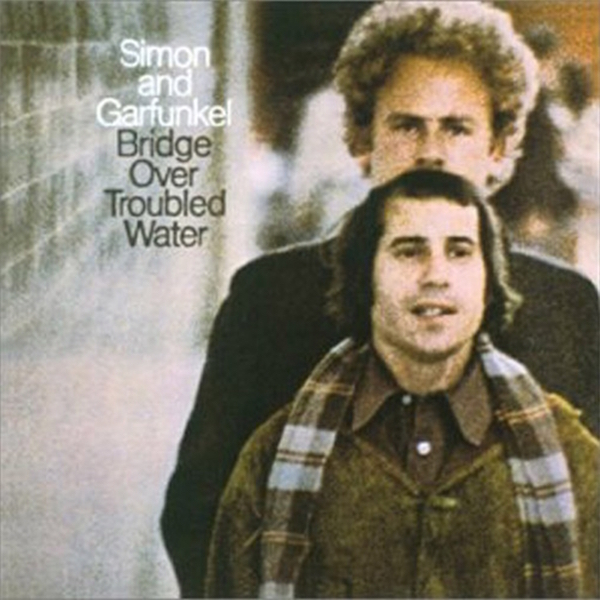
Simon and Garfunkel were peaking in popularity when this album was issued in January of 1970. For those old enough to remember, the end of the ‘60s, the break-up of The Beatles, and seeing both college and teen years way in the rear view mirror made for traumatic times.
The somber yet uplifting title tune captured that winter’s lonely feel and hit many hard. The “El Condor Pasa” adaptation backed by Los Trabajaros provided a hint of the eclectic world music Simon would later incorporate into his solo albums, as did the joyful Caribbean-tinged “Cecilia”. “Keep the Customer Satisfied” with its blaring horns is Simon’s road song complaint while “So Long, Frank Lloyd Wright” is probably more about Simon and former architectural student Garfunkel’s break-up than it is about the architect Frank Lloyd Wright, but it well serves that purpose as well. It ends a satisfying but not exactly coherent record side.
Side two has Simon and Garfunkel exiting in grand style starting with the epic “The Boxer”, which required a live mix down using fourteen tracks provided by two synched 8 track recorders, features a fader glitch at the song’s conclusion that Roy Halee said they were forced to leave in because no other attempted mix matched this one’s magic.
That haunting song alone would suffice for the whole side in my opinion but instead we get the Beach Boy-like rocker “Baby Driver” that serves as an effective bridge to “The Only Living Boy in New York”, the side’s other epic song and production.
The duo produced the ethereal overdubbed chorus of “aaahs” singing from inside the studio’s echo chamber.
“Why Don’t You Write Me” is a short, reggae-infused plea for a loved one’s letter. It’s McCartney-esque or you could say “Wings-like” but Wings had yet to form.
The cover of The Everly Brothers’ “Bye Bye Love” recorded in Ames, Iowa during the duo’s opening night after a hiatus during which Garfunkel starred in a movie brings the duo full-circle back to one of their earliest inspirations.
“Song For the Asking serves as the denouement and as Simon’s assurance to the fans that he still had plenty to give in the next career phase. The song was a melancholic farewell to Simon and Garfunkel and to the real life fantasy that was growing up in the 1960s. The musician line-up was impressive. It included guitarist Fred Carter, Jr. who played with Roy Orbison during his heyday, as well as Bob Dylan and many others, and the “Hollywood Golden Trio” of Larry Knechtel on piano, Joe Osborn on bass and Hal Blaine on drums, Bridge Over Troubled Waters” went on to sell in excess of twenty five million albums world-wide .
When I asked Roy Halee about Classic Records’ 1990s era reissue of Bridge Over Troubled Water at both 33 1/3 and multi-disc single-sided 45rpm, he was skeptical because to the best of his knowledge the original master was not in good condition. However, the Classic reissue sounds superb, and at 45rpm especially spacious and dynamic.
I compared this reissue to an early (1AC) pressing and of all of the records in this box, this one loses the most in terms of transparency and spatiality, but it is still a extremely well done transfer given the tape’s age and that were hearing it digitized. You can really hear the space and image flattening on “The Only Living Boy In New York”, where on the original the “aahs” produce a greater soaring sense and are placed well back in space and seemingly flattened against a back wall, but in relief. On the reissue it’s a flatter image, well forward in space and it doesn’t quite achieve lift-off.
That said, the reissue’s tonal balance is, as on all of the records in this box, essentially identical to the originals and you could argue that the reissue resolves greater low level detail, due in part to tighter, better defined (but less prodigious) bass.
Simon and Garfunkel’s Greatest Hits
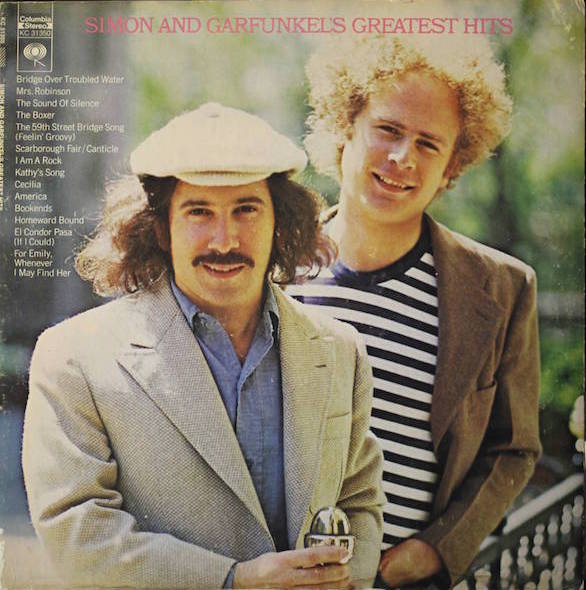
Because this one was assembled from master files, it saves a generation (at least) compared to the original. Few “greatest hits” packages during the all-analog era match the original’s sonics, though some like The Very Best of Roy Orbison (Monument) and Tommy James and The Shondell’s Greatest Hits (Roulette) have some kind of magic.
The attraction here is having so many hits strung together plus having well-recorded live versions of four songs: “For Emily, Whenever I May Find Her” sung gorgeously by Garfunkel, “The 59th Street Bridge Song” with just Simon’s acoustic guitar backing and the two voices split between the channels recorded in 1970 at Carnegie Hall during their final concert appearance before breaking up later that year. The other live performances are of “Homeward Bound” and “Kathy’s Song”.
Conclusion
Limited to 1000 copies, this carefully produced box set containing five Simon and Garfunkel studio albums plus the greatest hits package as well as digital downloads, and well-annotated and produced booklet plus poster is easy to recommend especially given the $149 price. As this is being published (9-2-15) the set is on sale for $119 at Music Direct.
To summarize the sound: I think clean originals (other than the “Greatest Hits”) will offer somewhat greater transparency, image three-dimensionality and spaciousness, both because of the fresh tapes used in production and because they are AAA.
However, these reissues come awfully close in most ways and I am sure some will find the greater transient precision of the new cuts resolves more information, particularly in the cleanliness and tonality of acoustic guitar strums.
Some readers complain about reissues of easily found originals and that might be the case here. These guys sold millions of records and millions are yours “for the asking”. However, when that many copies were pressed, variability is great too. I’d be looking for 1A through 1AF pressings and make sure they are really quiet and clean.
You could do that or for $150 or $120 get the whole set in an attractively produced, limited edition box. One caution: as with the Record Store Day Roy Orbison box, RTI’s inner sleeves or whatever caused excessive and really ugly surface scuffing of one or two records in this set, probably because during shipping they are free to slide around in the box.
- Log in or register to post comments


Actually, despite the millions of copies sold by S&G, getting really clean originals is damn hard to do and forget about it on a budget. I know, I tried it some years back. Part of the reason it's so tough is that records by artists that popular get played to death. It's far easier to find 70s presses and you can even find some still sealed now and again, but by that time you have tape copy sound issues and, well, it never really ends does it.
So I'm tempted by the box, too.

it will be more than 119.00 but it is great fun i can confirm. i ran into an old/original box set like this a few years back...

Bought the box set an I am very satisfied for the price. Pretty much agree with your assessment. One complaint - unable the download the digital files. Emailed the company and the response was too bad we use a second party. Would like to listen in the car and don't have an ADC to copy them.

I do not know the source but to my ears these are some of the best sounding versions. I have a Promo copy, the needle goes down on a acoustic version of I Am a Rock and all you hear is tape hiss and then the sound spills from the speakers. Record One is The Paul Simon Songbook produced by Reginald Warburton and Stanley West. All acoustic versions and all great sounding .I have the original CBS and Columbia pressings of PSR&T and it is a toss up. With Columbia sometimes the second pressing sounds better than the first, no general rule just this variation that just is. I have original Canadian, American pressings of Santana's first album, second American pressing. I thought the best was the original American columbia pressing until I heard the the Joerg Kessler ARS reissue which blew all previous versions out the door. To my mind the Greatest Hits package in a lot of ways sounds better than the original album versions, produced in 1974 on thin vinyl, go figure. Definitely what makes this hobby so interesting, you never know what you are going to hear until you do.

that the sound quality on several tracks is better than their original album equivalents. Of note to me are the tracks from The Sounds of Silence, which sound muddy on my original stereo pressing, but sound much clearer on Greatest Hits. The exception is the Bookends tracks, which sound quite a bit better on the original. I agree with Michael that Bookends is the best sounding of all the Simon & Garfunkrl albums.

I own 2 mono pressings of that second S & G album and indeed it has that cover minus the song titles.
There's also a rarity on the back cover:
that certain copies have the type airbrushed from the magazine held by Garfunkel in the center photo.

See the Wikipedia article for some of the details. Other websites have more details. Front and back covers had variations as well as the information printed on the record labels.
It would have been nice if the mono versions of the first 4 albums had also been included. Luckily, those are easy to find, except for Bookends, which wasn't released in the US and maybe just the UK.

Of course the mono bookends was released in the US, it's just ridiculously rare.


Here are the markings on my albums:
Wednesday Morning, 3 AM
mono 1F/1C
stereo 1H/1L
Sounds of Silence
mono (all caps cover with no songs listed, Tiger Beat on back, Anji listed as Angie on back and label) 1B/1B
mono (songs listed on cover, Tiger Beat on back, Anji listed as Angie on back and label) 1F/2C
stereo (songs listed on cover, Tiger Beat on back, Anji listed as Angie on back and label) 1J/1J
Parsley, Sage, Rosemary & Thyme
mono 1D/1A
stereo 1H/1K
The Graduate (LP box set should have had this)
stereo 1AD/1AJ (obviously a late 80's purchase when stores were dumping LPs)
Bookends
stereo 1B/1B (I only paid $5 for this recently and the record and cover are in very good condition)
Bridge Over Troubled Water
half-speed mastered stereo 2F/2C (I wonder if this sounds as good as a first pressing with no half-speed mastering)
quad 1A/1A
Greatest Hits
3BJ/3BE (an early 80's purchase)
By the way, the song is called "The Sound of Silence" and the album is called "Sounds of Silence."

Bookends was commercially released in mono in the U.S.; I have a copy. Also commercially released in mono, and by far the rarest American S&G album, is the soundtrack to The Graduate. Finding Bookends in mono is tough; finding The Graduate in mono is nearly impossible.

...both have been hard for me to find. I do have a Dr. Ebbett rip of the UK mono release. As is the case with the Beatles and Bob Dylan, all of the S&G mono releases have distinctly different mixes compared to the stereo releases. Someone should box all the mono releases, because I would buy it just for the Graduate and Bookends alone.

...for some songs are pretty clear. Others sound as if they could have been stereo folds. I think the singles from side 2 are distinct mixes since those were mixed for mono first and then stereo many months later.
Also, I want to correct that I have a rip of Dr. Ebbetts' US mono version, not the UK version.

I don't have one, but I've read discussion group reviews saying people thought the UK mono a fold-down, or a part fold-down with one side dedicated and the other folded.
The US is dedicated. Wish there could be mono reissues of the LPs released in mono. In particular, the mono mix, to my ears anyway, of Wednesday Morning 3 A.M. is far superior to the stereo. The tonality is richer, the clarity of the acoustic guitars is superior and, strangely, both voices and guitars are louder in the mix. Love it.
Oh, and for those interested in this kind of thing, there is an early 1970s French reissue of The Sounds Of Silence LP in its correct mono mix that, when you can find it, can be had for pretty cheap and it's faithful to the US original.

I recently bought a 1A/1A mono copy of "S of S" with the original, blue-lettering cover. The "bass-twangy opening" of "Richard Cory" is much more prominent in the mono version (I think it might be a baritone or Fender VI).
There's a nice interview with Art G. in the current Mojo magazine (Keef cover).

I tracked these down years ago and now have nice originals of all. It cost me well under $100 to do that. I love Bookends but IMO the best "spooky" analog sound is on 3 am.

Well, I've also wondered about this alphabetical system on Columbia pressings. I have a copy of Dylan's debut (mono, label-design suggests '66-67), side one say "1C" (also four notches etched, or four sticks to Led Zep fans); side two reads"1AB" and has no notches.

How is this different from the Legacy release?
http://www.musiconvinyl.com/catalog/simon-garfunkel/complete-columbia-al...

I have BOTW (Sundazed pressed by QRP) and Bookends (pressed by ?). By far Bookends sounds better. QRP pressing has several loud tics right at the beginning of BOTW and El Condor Pasa. It's a real shame they occur in such quiet songs. Also, have a very early PSRT and a later reissue? (unknown date per discogs)of SOS. So, I skipped the box. Great review, makes me sorry I passed up the Popmarket deal. I bought my daughter a very clean box reissue Collected Works which aren't really the best pressings but the set was $18 (near mint, more like unplayed). No covers, but good for someone just looking for the basics. Thanks for the in depth review and the details, it has me with my headlamp on looking at the matrix codes on my originals. Looks I have a 1st pressing of Concert In Central Park. Gotta love this stuff. Thanks for the in depth review and updates from the insider.

My box is No O5140 (RTI version). There is also a MOV version. My Scottish supplier was able to get a replacement disc for a faulty 'Greatest Hits' from the label (from the US). That suggests more copies have been pressed for individual release. Most of these records have 'scuffs' that do not affect the sound. Not sure it's the sleeves that cause this but I now remove the RTI poly sleeves and replace with Mo-Fi.

Yes I was wondering about this too, as mine have No. 04425. Didn't notice any scuffs on mine but I will be cleaning them and putting them in Mo-Fi sleeves.
Well be spinning them this weekend.

My 7.5 ips reel to reel factory produced tapes of Books Ends and Sounds of Silence are just incredible sounding. That master tape is hot. The first time I played Book Ends on tape I about jumped out of my skin. It is so dynamic. Yea a little hiss... like a light rain in the back ground at high volume. Those are 2 of my go to stereo demo recordings... only thing slightly better is the direct to disk Sheffield Labs stuff. I bet those reissues sound incredible. I don't know the story behind the engineering of those S&G albums, but they were some of the best to my ears.
Ken

Ken, I would agree; I have these as well!

While it's great the GH album was assembled from the master files from the earlier albums, aside from the live songs on it, the original Greatest Hits LP contains a unique version of "America" which starts clean from the first note, unlike on the "Bookends" LP where the start of it and the end of "Save The Life Of My Child" are crossfaded into each other. I'm not sure if the GH version is a new mix made for the LP or on "Bookends" they had both songs mixed to separate tapes and they copied them and did the crossfade there to make the LP master and the GH album used the tape they used to make the crossfade with.
So, which version does this set have? The clean intro one or a "faded up" one?

Michael, do you by chance have a Quality Control contact at Sony Music? My boxed set arrived with a damaged S&G Greatest.

If the record sounds the same as a high-res download, what's the point of buying the record? Unless the originals are crazy expensive, I would much rather have an old pressing.
I wish all the reissue labels would take the time to do what Analogue Productions is doing.





